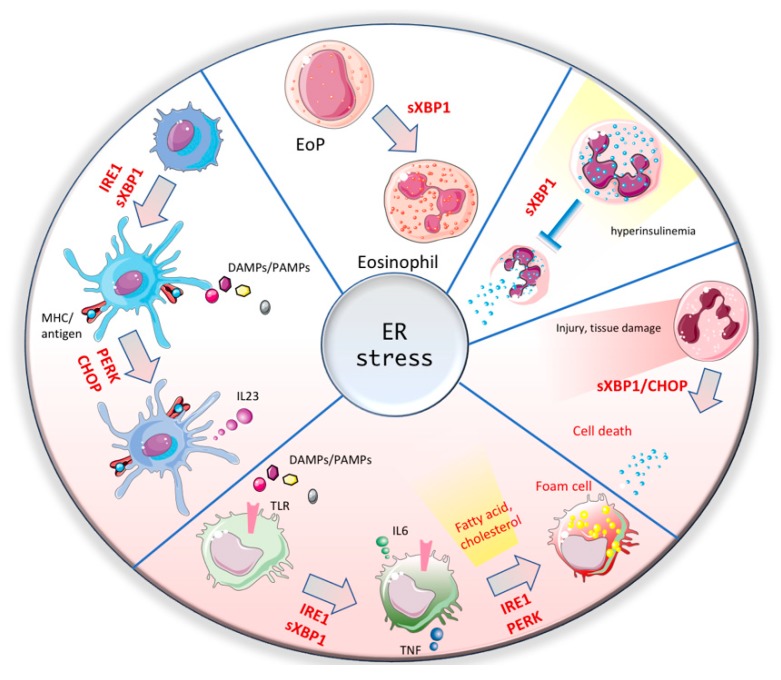Figure 2.
The multifaceted roles of ER stress responses in myeloid cells. ER stress mediators play an important role in modulating development and function of innate immune cells. Immature dendritic cells (in light blue) require IRE1/XBP1 activation in order to differentiate in mature DCs. Mature DCs, upon encountering DAMPs and PAMPs activate PERK/CHOP pathway to accomplish a full activation and the release of IL-23. In macrophages IRE1/XBP1 promotes activation of proinflammatory IL-6 and TNF. However, in disease context, excessive activation of ER stress upon lipid accumulation lead to the formation of foam cells, cell death and impaired resolutive response. In neutrophils, activation of ER stress is associated with increased cell death during development and upon tissue damage. In the context of hyperinsulinemia, mast cells accumulate lipid bodies that cause ER stress response IRE1/XBP1, which results in inhibition of degranulation. Eosinophil precursor (EoP) constitutively activate XBP1 in order to give rise to mature eosinophils.

